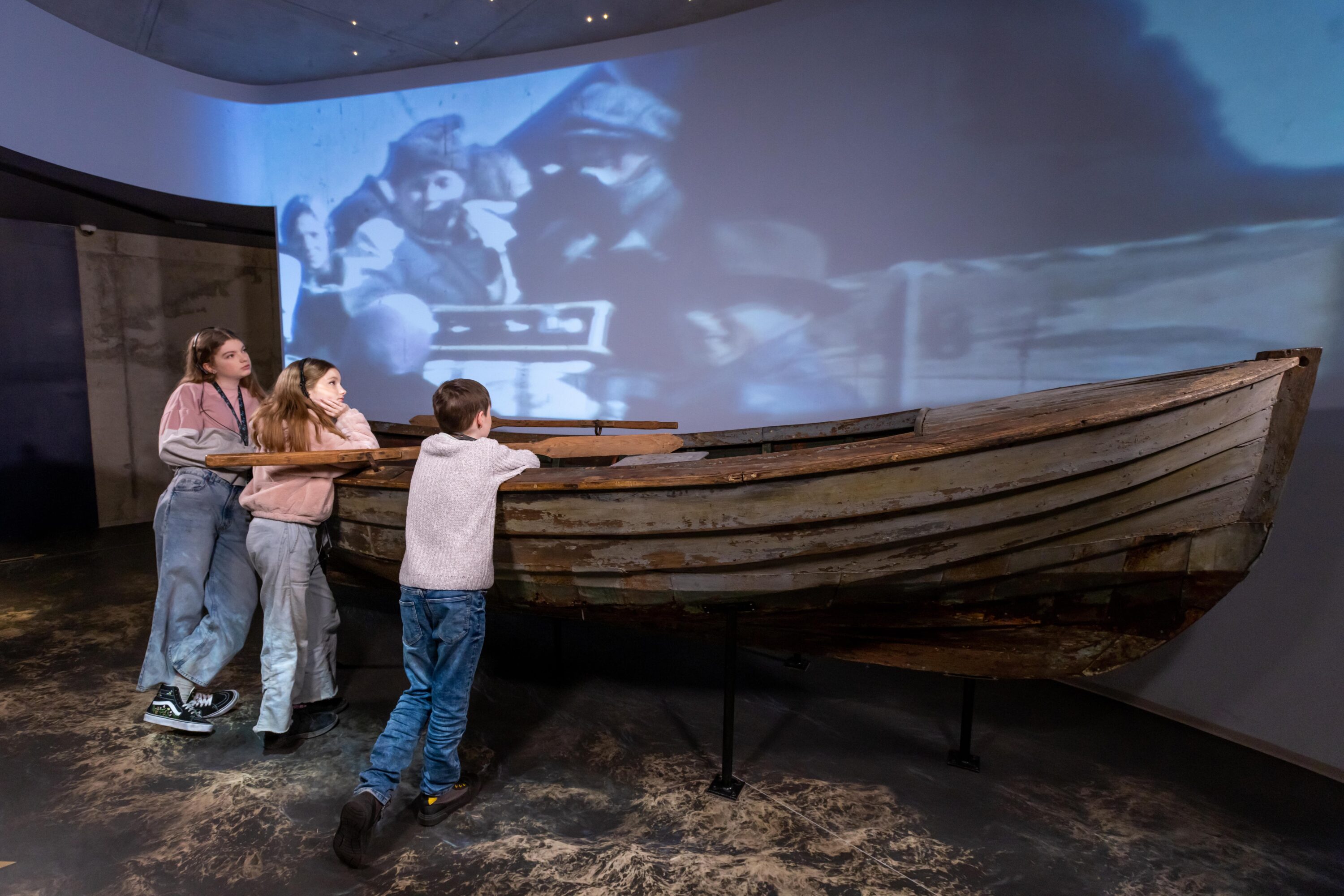- Permanent exhibitions
- Püsinäitused
Freedom Without Borders
The exhibition ‘Freedom Without Borders’ speaks of occupation, resistance, freedom, and recovery. It consists of five parts: crimes against humanity, Estonians in the free world, life in Soviet Estonia, the restoration of independence, and freedom.

The exhibition ‘Freedom Without Borders’ speaks of occupation, resistance, freedom, and recovery. It consists of five parts: crimes against humanity, Estonians in the free world, life in Soviet Estonia, the restoration of independence, and freedom.
Crimes Against Humanity looks back at the moments in our recent history when a general lack of humanity stifled the people living here.
The items and visuals in Estonians in the Free World tell the story of Estonians across borders, in exile.
The section of the exhibition focusing on Soviet Estonia is divided into two parts. First, we cover the introduction of the Soviet regime and the ideological choices faced by individuals. The second major theme addresses the cultural peculiarities and characteristics of everyday life in the Soviet Union.
The floor housing Restoration of Independence focuses on the period of the Singing Revolution and the restoration of independence spanning from the Phosphorite War of 1987 to Estonia’s accession to the European Union in 2004. The exhibition centres around eight people who are not mentioned in the annals of history.
The portion on Freedom examines freedom as a state of tension, in which a balance must be struck between freedoms and responsibilities.
The creation of the new permanent exhibition involved both in-house and outside specialists. The curator of the theme on crimes against humanity is Sander Jürisson. Escape from the Second World War and the life of Estonians in exile is unveiled by the University of Tallinn doctoral student and junior researcher Maarja Merivoo-Parro. The curator of the Soviet life portion of the exhibition is Tallinn University lecturer Uku Lember, PhD. The section on the restoration of independence was prepared by Oxford University postdoctoral researcher Aro Velmet, PhD. The subject matter for the section focusing on freedom was co-created by communications expert Daniel Vaarik and artist Kaido Ole. The musical interior of the courtyard was created by the musician Taavi Tulev.
An e-tour guide leads the journey
En route through the museum, the visitor is accompanied by an e-tour guide specially designed for our permanent exhibition, which guides the visitor on a gripping and contemplative journey through the paths of recent history.
We offer e-tour guides in nine languages (Estonian, Russian, English, Finnish, German, French, Spanish, Latvian, Lithuanian). Guide texts were created by dramatist Eero Epner.
Visiting the museum with children
The e-tour guide created for families is suitable for children from 6 to 12 years old. Apart from the e-tour guide, there are many other exciting things waiting for children to discover. The museum has a special exhibition targeted at children, which provides memorable activities and excitement for the whole family. We will recount gripping stories for different age groups. The e-tour guide for families is available in seven languages – Estonian, English, Russian, Finnish, German, Latvian and Lithuanian.
The e-tour guide created for families features the voices of Noora Merivoo and Sergo Vares.
In preparing the exhibits for children, we received assistance from Tallinn University doctoral student Sireli Uusmaa.
The family level was awarded with the title of Promoter of Museum Education in the Estonian Annual Museum Awards in 2019.

 Back
Back